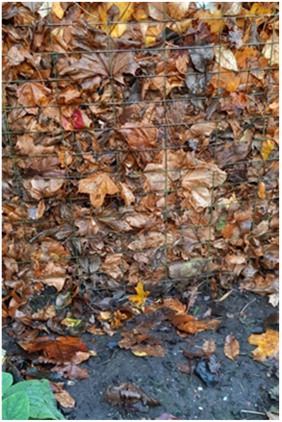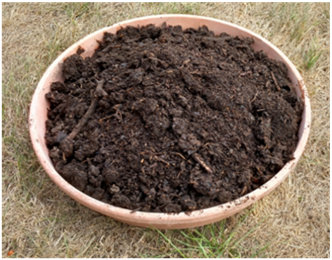

Tower and Town, October 2025 (view the full edition) (view the full edition)LeafmouldIf you are a gardener and have access to fallen leaves, then why not make leafmould. Leaves left to decompose in a bin or bag will reward you with a mass of crumbly organic matter in 1-2 years. It is not full of nutrients, but is a huge asset on chalky soils acting as a sponge and holding water, while on heavier soil it helps to create air pockets and improve drainage. Leafmould, if very fine can be used for planting large seeds, as a mulch, or when mixed with equal parts of sharp sand and garden compost for a potting compost. 
I find it easier to rake up leaves when dry, but they do take up space, whereas when collected after rain, are more compact and the moisture starts the rotting process. A pair of leaf boards are helpful to pick up leaves and can be made from rectangles of thin board or plastic. On a lawn collect using a lawnmower, but be aware the box will need emptying regularly, while a shredder is good for tougher leaves. Any chopping will speed decay. I store leaves in a wire bin, which can be made from winding chicken wire (or something similar) around some sturdy posts, making sure there is a 'door' to access the leafmould once made. Leave the bin open to the elements as rain helps the decaying process, but on a windy site cover with a sack or old compost bag slashed to let the rain in and weighted down by bricks. Instead of a bin you can use old compost bags or hessian sacks to store leaves, which should be kept damp and stored in inconspicuous parts of the garden. Store conifer and pine needles separately to make acid mulch for ericaceous plants. 
If you only have a few leaves, simply rake into flower beds for the worms to take down to enrich the soil, but be careful not to smother delicate plants or bulbs with large leathery leaves which take a long time to rot. Miranda Gilmour |